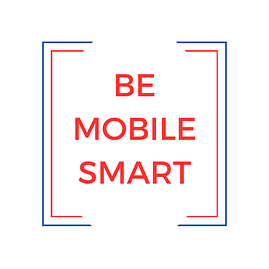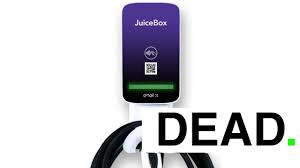Sometimes it pays to be dumb. Particularly when it comes to smartphone apps that try to plug your electric car into the utility grid.
This Fall (October, 2024) a well-known and popular EV charging device failed. Connected Juice Box chargers stopped working. That’s because their European owner, called Enel X Way, stopped supporting this software and quit the North American EV charging market without notice. Enel, which is Italy’s largest utility company, blamed the decision on high interest rates, slumping sales, and compared to their European market, “the lack of a retail electricity customer base.” So Enel X Way, North America stranded EV owners with a brick, a charging device that could no longer communicate with the grid.
Stand-Alone:
The U.S. company that Enel X acquired, called JuiceBox, once had a fine Level 2 charger. It was originally hand -assembled in a back lot near the San Francisco airport. (spoiler alert: this author bought one, it still works, from their “factory”.) This home charger was cited to be the best in its class by CNET, Car and Driver, Popular Mechanics, and others. Because of its durability, an Enel announcement reported JuiceBox sold a lot of chargers, perhaps ~ 170,000 units.
The original Juice Box product mounted on the wall, or, depending on the model, it could be packed up for road trips. The key is that it did not have to be connected to anything, except a 220 Volt electrical plug. Even the earliest Juice Box chargers offered a smartphone app, but it was redundant since electric cars and plug-in hybrids had those features built into their own charging interface.
Juicebox ( aka eMotorWerks) was acquired in 2017 but it was in 2022 that Enel X North America said they planned to “amp up” the business and grow to two million residential, commercial, and public EV chargers. They were tapping into NEVI funds and partnerships, plus expanding upon their global business, with sizable investments in large battery storage and renewable energy. In the U.S. they named Louisville Gas and Electric and Kentucky Utility as first-wave energy partners.
Level Load:
The new business added load-sharing to the mix, a feature that neither the car, nor the stand-alone Juice Box offered. That’s the ability to level out, i.e. “modulate”, the electricity demand. A smart charger works like a traffic cop to regulate the speed and time. Enel X had experience working with utility companies in Europe.
Enel X saw the future: as electric vehicles continue to displace gasoline cars, we need fewer gas stations and more load-sharing opportunities. But it didn’t go as planned in North America. Existing JuiceBox users were forced to migrate to a new app. It didn’t work and they complained on Reddit. After multiple attempts at fixing the software, the company pulled the chargers out of the North American market- stranding those who bought the product and trying to use the software.
A Necessary Product:
There will continue to be roadkill in the development of the electric vehicle- think Fisker and Lordstown, but Enrel North America offers a special, cautionary window. First, the original product they acquired, the stand-alone Juice Box EVSE, was durable and well designed. It did have its own app, but an EV owner did not need to use it.
But, with more EV drivers residing in multi-family apartments and condominiums the electricity needs compound. Power-sharing is evident as we move past the first wave of electric vehicle owners who live in single family homes; about 65 percent today. Multiple users and cars will connect at the same time, each calling for their own electrical feed. If an individual owner sets the time to start and stop charging, they cannot optimize the timing and speed for other vehicles and appliances. Enel X software was supposed to do this, working in conjunction with the utility providers. Enel X may have been out-of-the-box too early, or too far ahead of bidirectional charging.
Deceptively Selfish:
In the post-mortem, it’s unclear that a personal app is the optimal place for this networked function. Load leveling is needed across the entire electrical panel, not in the hands of the individual app user.
Connected devices, like an EV charging app, are deceptively simple and deceptively selfish. The apps promise that you can regulate the electrical feed in your own hands, through your smartphone. The first oversight is this: car manufacturers build this in. The second oversight is that the EV charging industry has to get cozy and connected to the business of electric utilities. So the Italian firm that stepped into the U.S. utility market is like the Enron of charging. It bought up good assets, promised more from them, and then left owners high and dry. It’s a story that will get repeated as more smart devices jump dumbly into EV charging.

